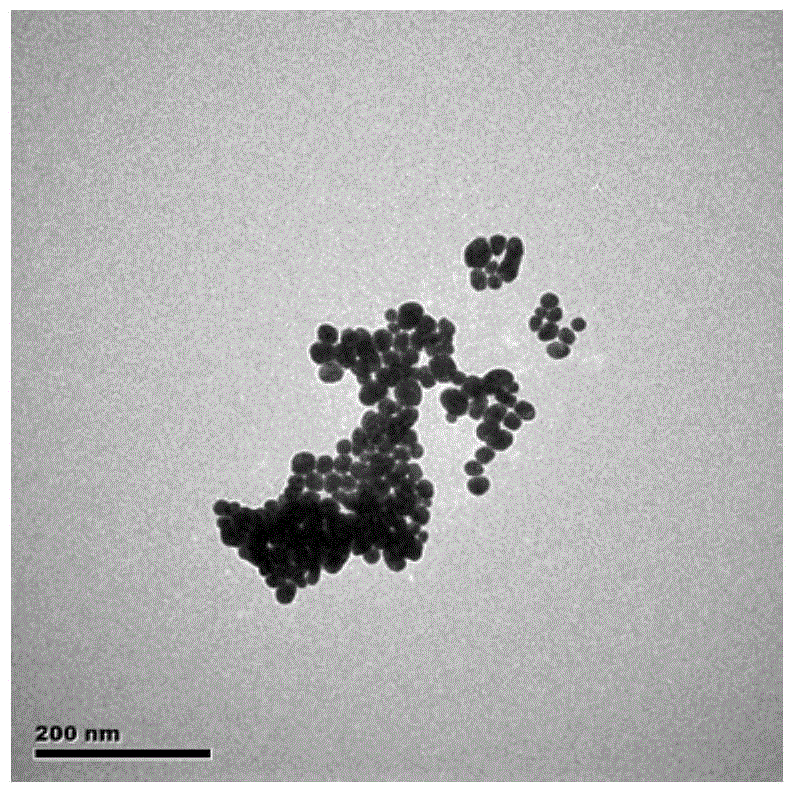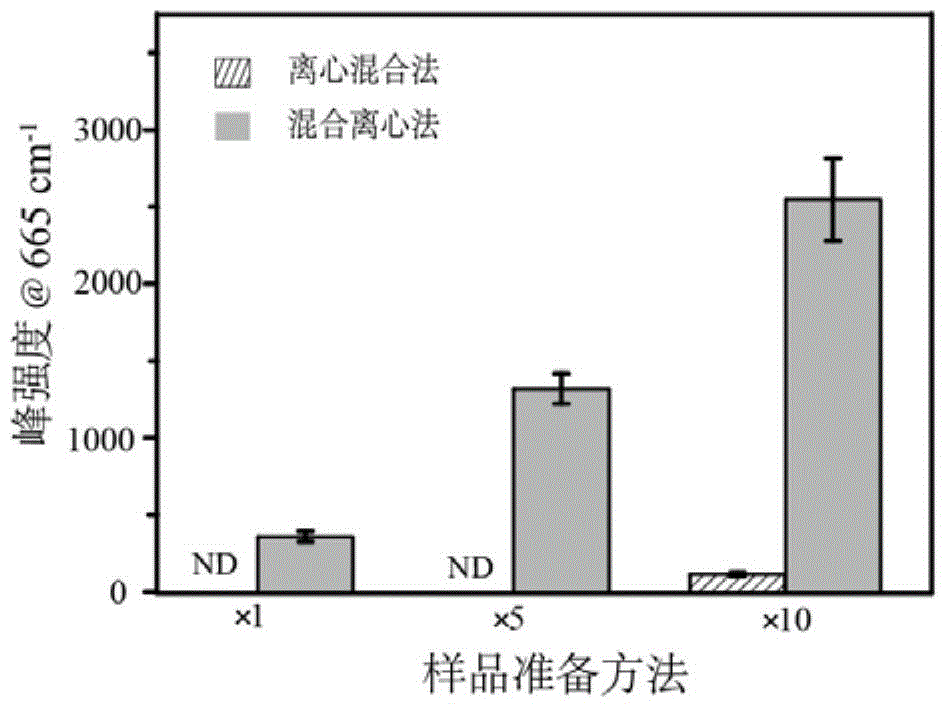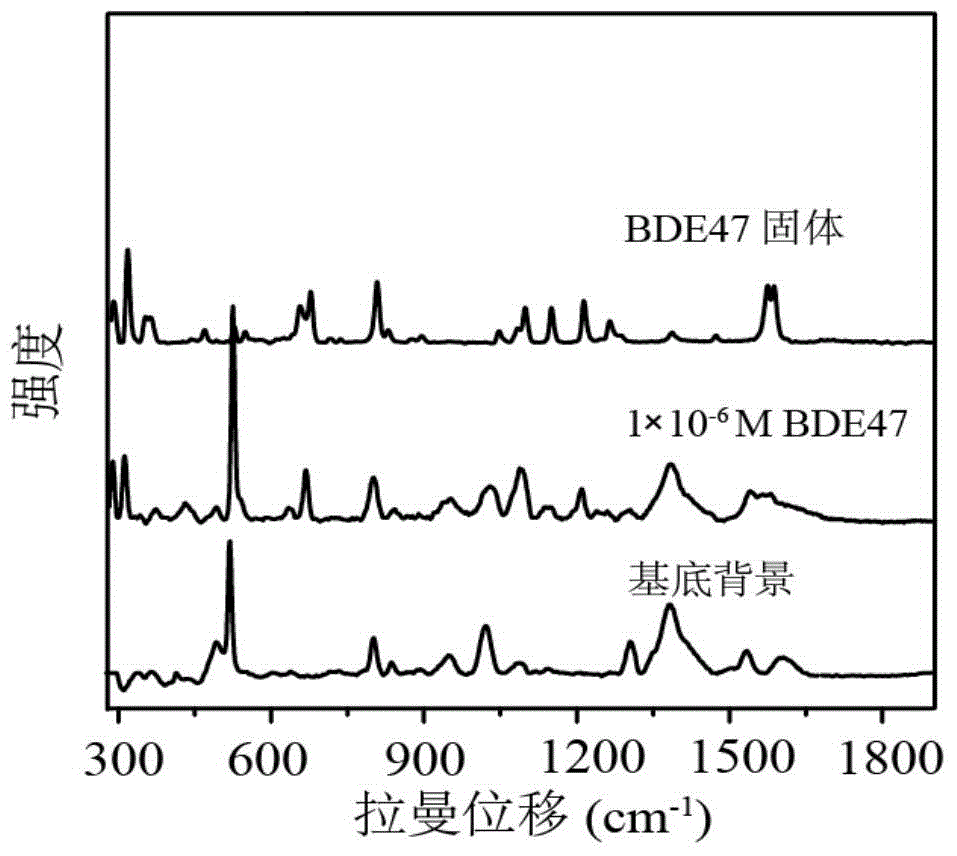Detection method of polybromodiphenyl ether
A technology for polybrominated diphenyl ethers and a detection method is applied in the detection field of polybrominated diphenyl ethers, and can solve problems such as narrowing of distances and no SERS yet seen.
- Summary
- Abstract
- Description
- Claims
- Application Information
AI Technical Summary
Problems solved by technology
Method used
Image
Examples
Embodiment 1
[0019] Preparation of embodiment 1Au nanoparticles: get 1mL2% HAuCl 4 The solution was added to 23 mL of deionized water, and the above solution was heated under mechanical stirring in an oil bath. When the temperature rose to 100°C, 1 mL of an aqueous solution containing 75 mg of sodium citrate was added to the above solution. After reacting for 20 minutes, the heating was stopped, and the product was continued to stir and cooled to room temperature to obtain Au nanoparticles.
Embodiment 2
[0020] Example 2 Enrichment and detection of PBDEs: After mixing 0.5mL Au nanoparticles and 0.5mL BDE47 solution in a 1.5mL centrifuge tube, centrifuge at 8000rpm for 20min. The remaining substances were mixed, and 5 μL of the sample was dropped on a silicon chip, and a portable Raman spectrometer was used for signal acquisition, with a scanning time of 5 s and a scanning wavelength of 785 nm, to obtain the SERS spectrum of polybrominated diphenyl ethers.
PUM
| Property | Measurement | Unit |
|---|---|---|
| particle size | aaaaa | aaaaa |
Abstract
Description
Claims
Application Information
 Login to View More
Login to View More - R&D
- Intellectual Property
- Life Sciences
- Materials
- Tech Scout
- Unparalleled Data Quality
- Higher Quality Content
- 60% Fewer Hallucinations
Browse by: Latest US Patents, China's latest patents, Technical Efficacy Thesaurus, Application Domain, Technology Topic, Popular Technical Reports.
© 2025 PatSnap. All rights reserved.Legal|Privacy policy|Modern Slavery Act Transparency Statement|Sitemap|About US| Contact US: help@patsnap.com



